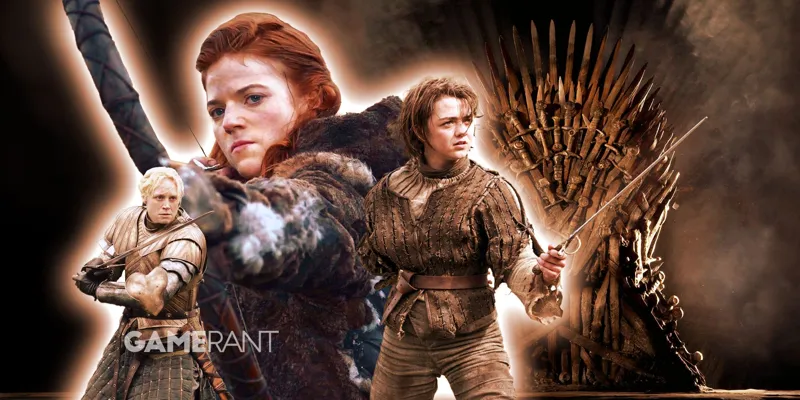In the realm of Game of Thrones, power dynamics shift under ever-changing circumstances. The world of Westeros dictates one's place based on birth, with little room for escape. While noble lineage reigns supreme, additional factors often influence one's trajectory. For females, limited options are a stark reality compared to their male counterparts. Yet, amidst these cultural biases, some women in Game of Thrones rise as warriors, defying societal norms.
Despite its fantastical elements, A Song of Ice and Fire accurately mirrors medieval life. While not set on Earth, the series draws extensively from historical references. Various cultural groups in the show are inspired by real-world counterparts, with significant events echoing historical moments. George R. R. Martin intricately weaves prevalent cultural beliefs of the era into the narrative, particularly concerning women's roles in society.
The Uncommon Warrior Women of Westeros
In Westeros, a few women have etched their names in the annals of battle, challenging the norm. While the Seven Kingdoms don't expressly prohibit women from combat, society disapproves of their 'unladylike' pursuits. Knighthood, a revered status, remains exclusive to men. Early Westeros witnessed figures like Visenya and Rhaenys Targaryen, sisters and wives of Aegon the Conqueror. Visenya brandished Dark Sister, the family's Valyrian steel sword, atop her dragon in warfare. Rhaenys, though not a swordsman, led troops and rode a dragon. Despite aiding in conquest, they failed to establish a culture of warrior women. Subsequent Targaryen women favored ruling and commanding over wielding weapons. Princess Nymeria of Dorne, a commander rather than a frontline fighter, left a mark on her culture. While Dorne harbors more warrior women, they remain an anomaly.
Brienne of Tarth, Arya Stark, and Asha Greyjoy, daughters of noble houses, diverged from traditional paths to embrace combat. Brienne, the sole heir of Lord Selwyn Tarth, rejected marriage to pursue a warrior's calling. Overcoming prejudice, she secured the first female knighthood in the Seven Kingdoms. Arya's early affinity for swordplay led her on a path to becoming an assassin under the Faceless Men. Asha, raised as Balon Greyjoy's heir, mastered combat and diplomacy, commanding armies with prowess. The ironborn culture, more accepting of warrior women, nurtured Asha's skills. Notable regions in Westeros with similar inclinations include:
- The North: Harsh conditions breed self-defense skills in Northern women, influencing Eddard Stark's support for Arya's martial pursuits.
- Bear Island: Women on this remote island wield axes to repel invaders in the absence of men.
- Dorne: Inspired by Nymeria, Dornish warrior women like Oberyn Martell's daughters, the Sand Snakes, exhibit combat prowess.
- Crannogmen: Known for gender-neutral combat training, exemplified by Meera Reed's skill with spear and net.
Warrior Women across Essos

Essos boasts diverse cultures celebrating warrior women. Local fighting pits feature formidable figures like Barsena, a respected champion. The Yellow City showcases Malazza, the Girl General, commanding a hundred slave soldiers. The Patrimony of Hyrkoon birthed fortress cities filled with bare-chested, pierced warrior women, renowned for their combat skills. The Kingdom of Sarnor excelled in chariot warfare, often led by women. The Jogos Nhai, nomadic and warlike, instilled combat training in every child. Essos surpasses Westeros in accepting and empowering warrior women, influenced by the Andal invasion.
Warrior Women Beyond Borders

The Free Folk north of the Wall embrace spearwives as warriors, with many excelling as archers and swordswomen. Harma the Dogshead, a formidable captain, embodies the egalitarian spirit prevailing beyond the Wall. The Summer Isles honor traditions of warrior women, with figures like Kojja Mo, captain of the Cinnamon Wind, leading the elite red archers. The legendary goldenheart bows of the Summer Isles trace back to warrior princess Xanda Qo, a unifying force. Despite facing societal biases, numerous women in Game of Thrones emerge as exceptional warriors, challenging gender norms and leaving an indelible mark on the Known World.

